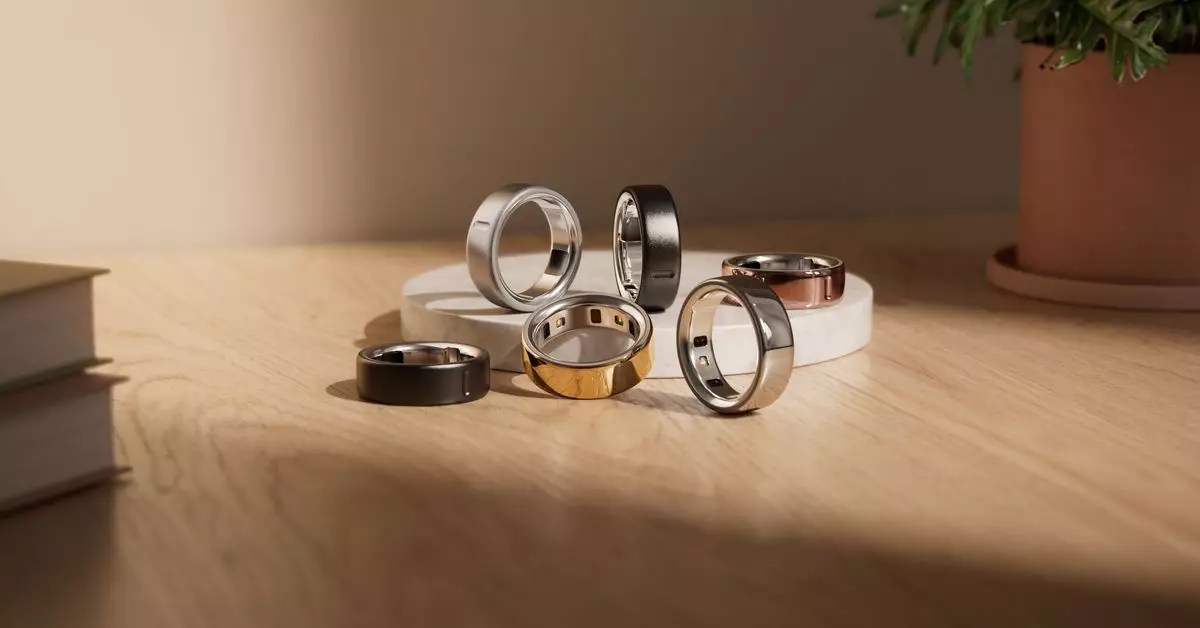In an increasingly health-conscious society, wearables have become significant tools for tracking wellness metrics. One of the frontrunners in this domain, Oura, has recently announced a major update to arguably one of the most popular products in the category: the Oura Ring. The launch of the Oura Ring 4 comes with new features, a sleek design, and emphasized improvements that could enhance user experience.
Unveiling the Oura Ring 4: What’s New?
At a retail price of $349, the Oura Ring 4 may appear to be a tweaked version of its predecessor, the Gen 3 model. However, upon closer inspection, it’s evident that Oura is committed to elevating the user experience. The ring has undergone a significant aesthetic transformation—now crafted entirely from titanium, it promises enhanced durability compared to the prior model which featured an epoxy interior. Furthermore, the design incorporates a fully rounded shape reminiscent of the Horizon styles, eliminating the previous flat edges that might have impacted comfort for some users.
One of the most beneficial revisions lies in the sensor technology. Traditionally, many smart rings have grappled with data inaccuracies due to variable finger sizes and movements throughout the day. The Oura Ring 4 addresses this issue by introducing a new algorithm that significantly expands the number of signal pathways from eight to eighteen. This adjustment helps ensure that the sensors communicate more effectively for accurate readings, which Oura claims has led to a 120% enhancement in signal quality as well as a 30% boost in blood oxygen tracking accuracy.
Data-Driven Improvements and User-Centric Features
The promise of reduced gaps in data acquisition—specifically, a 7% reduction in daytime heart rate gaps and a 31% reduction during the night—positions the Oura Ring 4 as a more reliable tracking device. Moreover, users can expect improved battery life, potentially lasting up to eight days. While these findings stem from controlled studies and testing environments, it’s essential to monitor how they perform in everyday situations; user experiences will be critical in determining whether these claims hold true.
Additionally, the Oura Ring 4 is embracing inclusivity by expanding its size range from sizes 6-13 to sizes 4-15, reflecting a demographic shift towards a predominantly female audience. Catering to various sizes is crucial not just in accessibility but also in ensuring that users can benefit from the smart ring’s technology no matter their finger size. This addresses a significant barrier for users who previously felt alienated from such technology due to size limitations.
Accompanying the hardware updates is a complete redesign of the Oura app itself. As the app has seen numerous additions—from stress and reproductive health tracking to heart health metrics—this revamp aims to streamline the overwhelming interface. Users will find the app segmented into three intuitive sections: Today, Vitals, and My Health.
The ‘Today’ section offers a real-time snapshot of the user’s health metrics, allowing individuals to track their wellness status throughout the day. The ‘Vitals’ section enables more in-depth analysis of various health scores, while ‘My Health’ focuses on long-term trends. This organized approach should help users make more informed decisions regarding their health.
Among the new features, Oura introduces automatic activity detection for 40 different exercise types, making it easier for users to track their workouts without manual input. This is a welcome advancement, particularly for fitness enthusiasts who appreciate detailed activity logs. Moreover, the addition of fertile window predictions showcases Oura’s commitment to providing comprehensive health metrics, though the company emphasizes that this feature is not intended for contraceptive use.
While the Oura Ring 4 aims to deliver measurable improvements, potential buyers may be discouraged by the $50 price increase from the previous model. However, existing Gen 3 units will still be on sale until stocks deplete, giving consumers options based on their budget. Furthermore, the company’s commitment to maintaining the existing subscription rates—$6 monthly or $70 annually—provides an additional incentive for new and returning users.
The Oura Ring 4 distinctly illustrates how wearable health tech is evolving. By prioritizing user comfort, expanding features, and creating a user-friendly app experience, Oura is poised to appeal to a broader audience and enhance the overall health tracking market. As the product rolls out, analyses of real-life usage will be crucial in determining how well these claims hold up in day-to-day applications.


Leave a Reply